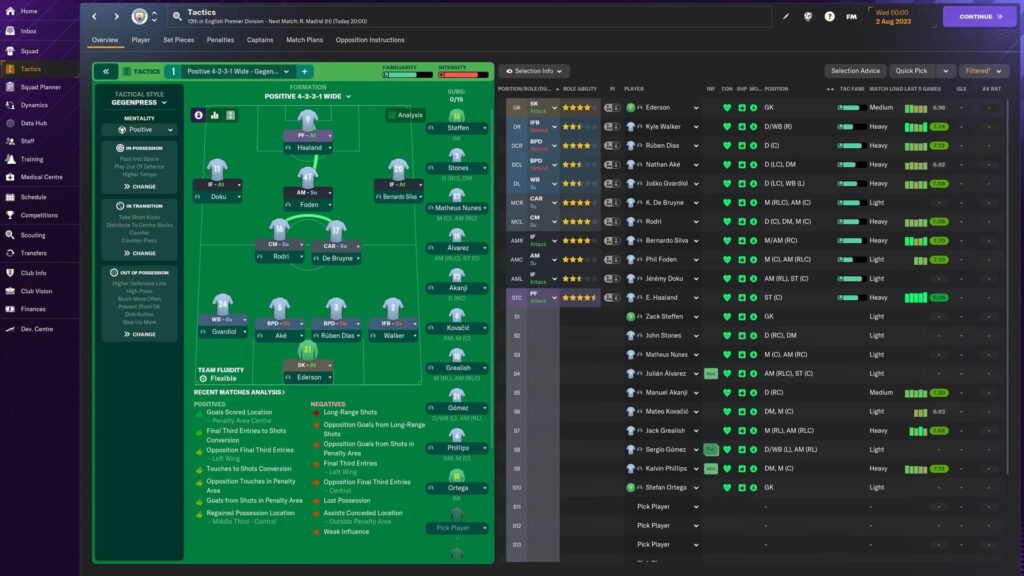
Contents
The simulation genre has evolved significantly over the past few decades. Whether you’re attempting to take the Kansas City Chiefs to the Super Bowl, managing a Champions League-chasing soccer team, or hitting apexes at Nürburgring, today’s sports and driving simulation games are the closest you can get to the real thing without stepping onto the pitch or getting behind the wheel.
Thanks to dramatic advances in hardware, artificial intelligence (AI), and real-world data integration, games that were once just fun to play now deliver real-time physics, authentic player behavior, and near-photorealistic visuals. But how far have we come? What makes today’s sports and driving sims so convincing? Let’s find out.
Football Manager: The Scouting Network Behind the Simulation

Football Manager (FM) is more than a game to those who play it. FM has set the bar for accuracy and realism so high that real-life managers and soccer teams have openly admitted to using FM’s player database to test tactics and scout unknown talent. At the start of each new soccer season, sports betting sites, newspapers, and sports bloggers use FM to simulate leagues and predict how they pan out. The game has been scarily accurate, especially in recent years.
The game offers unparalleled accuracy, thanks to a network of over 1,000 scouts, researchers, and contributors from around the world feeding real-life data into the system. They compile swaths of data on players, evaluating attributes like potential ability, technical skills, and even personality traits. The result is a soccer management simulation like no other, where players react to comments in the press, the pressure of important games, and transfer gossip.
Twenty years ago, these management games relied heavily on limited, static data and simple AI to simulate the running of a soccer team. Today, FM delves deep into the complexities, including contract clauses, player psychology, team dynamics, and match-day weather, while using machine learning to power its match engine.
EA Sports Franchises: A Legacy of Progress

EA Sports‘ portfolio continues marching toward hyper-realism. EA Sports FC (formerly FIFA), Madden NFL, and NHL, among others, used to feature stiff animations, robotic gameplay, and generic character models. But not anymore. Today’s EA Sports titles boast fluid player movement based on real-world motion capture, life-like stadium atmospheres, and AI that adapts to your real-time tactics.
The level of detail in player modeling is one of the standout elements of the EAFC and Madden series. Every major player from the top leagues is scanned using advanced 3D facial mapping technology so you can play as your favorite player. Skin textures, muscle movements, individual running styles, and celebration routines are replicated with jaw-dropping accuracy.
In addition to visual fidelity, AI improvements have allowed for a more authentic experience. In Madden, opposing quarterbacks read defenses, and wide receivers adjust routes mid-play. In EAFC, defenders intelligently jockey for position, midfielders create passing lanes, and strikers time their offside-breaking runs to perfection. Today’s sports games offer dynamic gameplay that feels authentic to players and viewers and is streets ahead of the relatively scripted outcomes of a decade or two ago.
Driving Simulations: From Arcade Fun to Motorsport Precision

Driving simulation games have become more popular than ever, thanks to the genre experiencing the most dramatic leap in realism. In years gone by, franchises like Gran Turismo and Need for Speed prioritized accessible gameplay over realism; they essentially offered an arcade-like experience. However, the rise of ultra-realistic games like Assetto Corsa Competizione, iRacing, and Gran Turismo 7 has blurred the lines between video games and professional training tools.
Modern driving sims are almost indistinguishable from the real thing for gamers using a wheel-and-pedal setup. Laser-scanned tracks, telemetry data, and real-world physics come together to create an unforgettable driving experience. Brake fade, suspension behavior, fuel consumption, and tire wear all contribute to the gameplay experience instead of merely being there for visual effects. Unsurprisingly, professional racing drivers like Lando Norris and Max Verstappen regularly use these games to keep their skills razor-sharp during the off-season.
Driving sim developers continue pushing boundaries with each technological leap. Thanks to advancements in VR technology, motion rigs, and haptic feedback, players can now feel when a rear tire begins slipping or the rumble of a curb through the force feedback steering wheel system. Most racing fans will never experience roaring around a track in a hypercar in real life, but the modern-day sims are the next best thing.
The Role of Data: Fuelling the Simulation
The use of big data is a common denominator across today’s realistic sports and driving simulations. Developers can access troves of performance metrics, biomechanical analysis, and real-time GPS tracking data.
In racing sims, telemetry from real-world cars is fed into the game’s physics engine. Some car manufacturers and racing teams collaborate with developers to ensure authenticity, meaning the player gets to experience what it would be like to blast around Monza in a Porsche 911 without owning such an incredible vehicle.
In sports games, player speed, stamina, and shot powers are not approximated; they are based on match data sourced from partners like Opta (for soccer) and Next Gen Stats (for the NFL). This enables developers to alter a player’s statistics in real time based on how the real-world player performs. Again, this adds an unparalleled layer of authenticity and accuracy.
Conclusion: The Simulation Future is Now
Sports and driving simulations have transformed from crude representations to highly sophisticated platforms, blurring the boundaries between entertainment and reality. Whether you are following in Ryan Reynolds‘s footsteps and trying to take Wrexham from lower-league obscurity to the Premier League, attempting to stop Patrick Mahomes from throwing a game-winning touchdown, or testing your endurance in a GT3 car at the Le Mans 24-Hour race, today’s games offer incredibly immersive experiences.
As technology advances and data becomes even more accessible, we could reach the point where the real and virtual worlds become indistinguishable. The golden age of simulation is not coming—it is already here.





